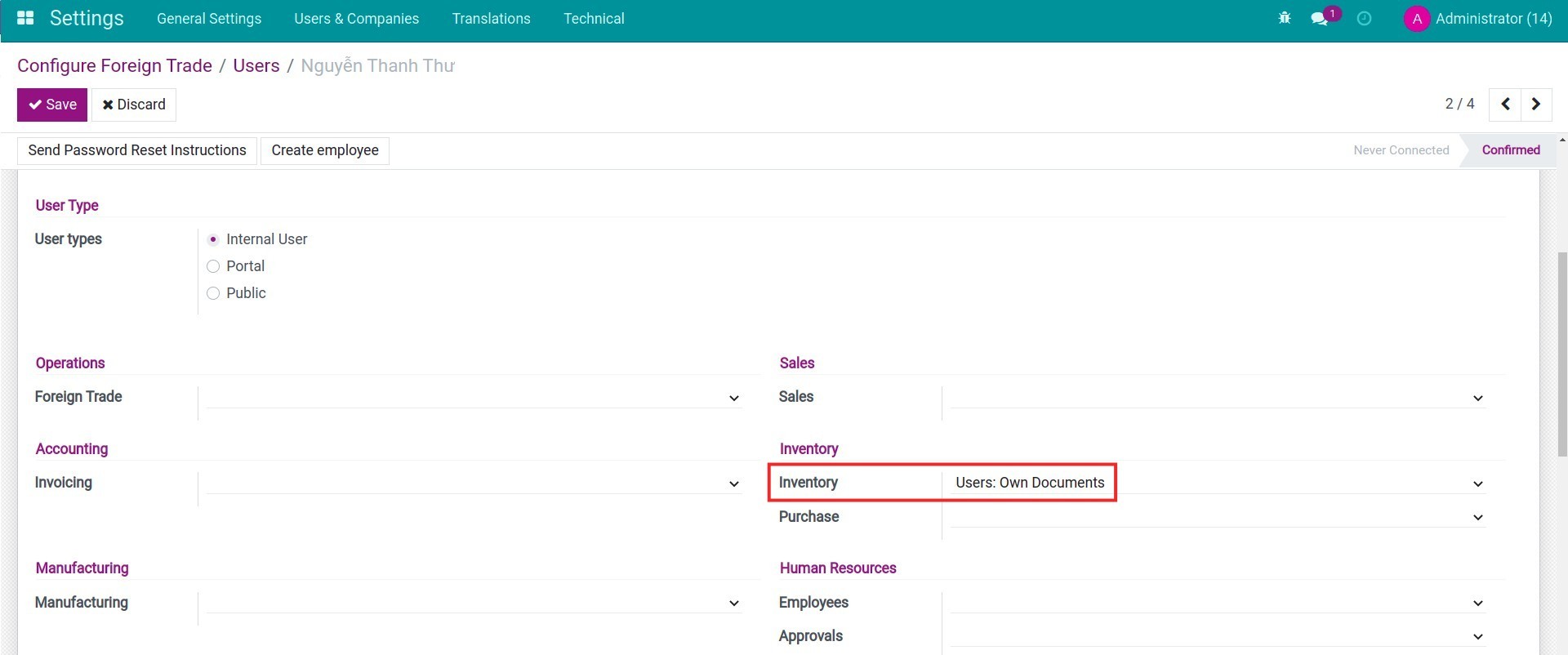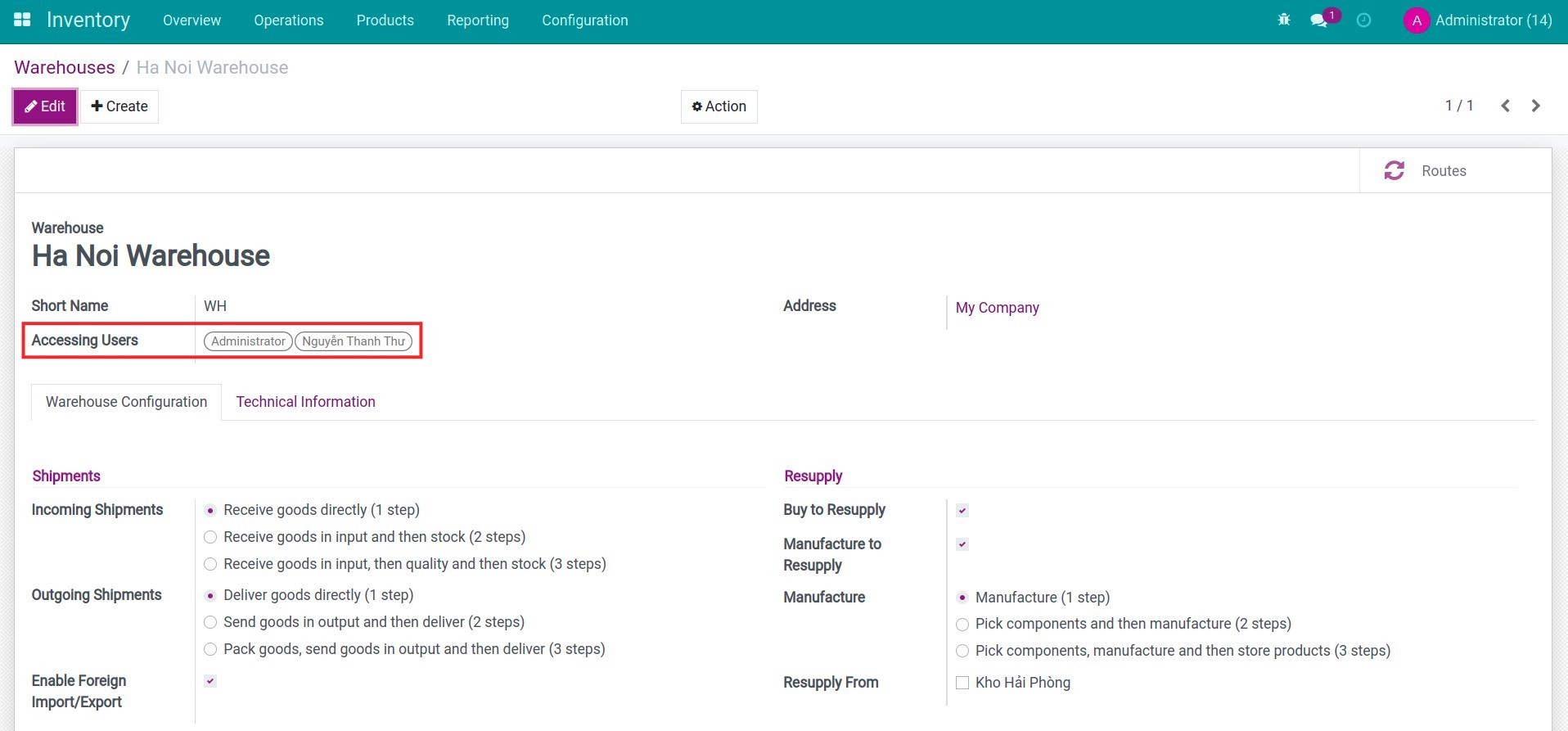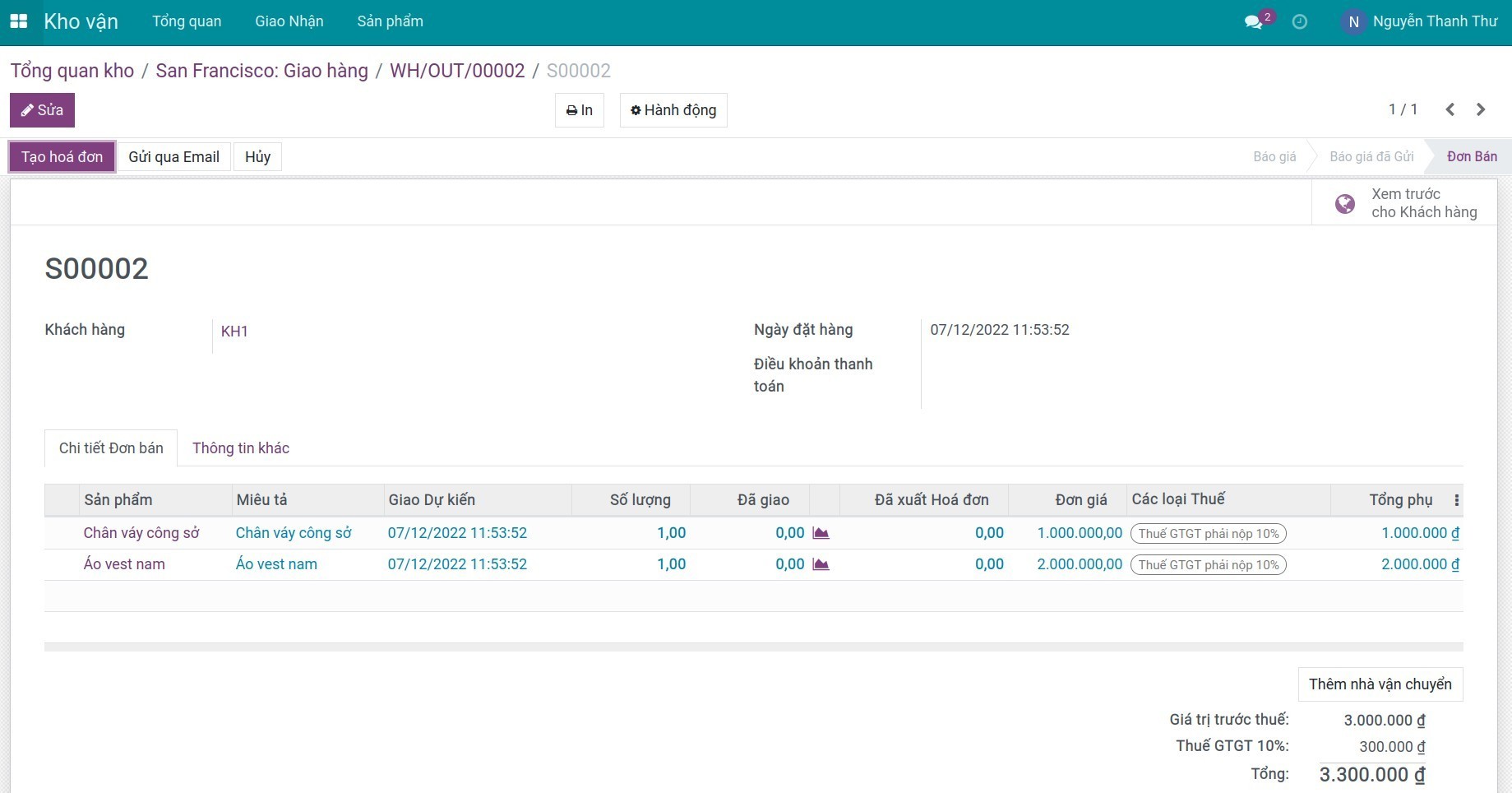Demo video: Multi-Warehouse Access Control - Sales
What it does
The module provides a feature that allows employees of the Users: Own Documents user group to view sales orders and sales order lines related to the warehouse they are in charge of. This will help employees to be more proactive in managing goods: planning product delivery for sales orders,...
Editions Supported
- Community Edition
- Enterprise Edition
Installation
- Navigate to Apps.
- Search with keyword to_multi_warehouse_access_control_sale.
- Press Install.
Instruction
Instruction video: Multi-Warehouse Access Control - Sales
Granting Users: Own Documents rights
You navigate to Settings, granting Users: Own Documents rights to users.

Granting access rights to users in the Warehouse
You navigate to Inventory > Configuration > Warehouses, click on specific warehouses then click Edit, and add the user you want to grant access to in the Accessing Users field.

Create a Sales order
You navigate to the Sales app to create a Sales quotation and press Confirm.

Employees see Sales orders in the Warehouse they are in charge of
Employees login to the user account that you have granted Users: Own Documents rights above. Then, employees navigate to the Inventory app to see the transfers in the warehouse they are in charge of.


Employees can click on the Sale Order's link in the open chatter to view the the Sales Order and details of each line of sales orders.


Note: Employees are granted Users: Own Documents rights and aren't granted on the Sales App will only be able to view, are unable to create/edit/delete sales orders in the Warehouse they are in charge of.
You can refer to the multi-level access control rights for the Inventory app at the Multi Warehouse Access Control module.
This software and associated files (the "Software") may only be
used
(executed, modified, executed after modifications) if you have
purchased a
valid license from the authors, typically via Odoo Apps,
or if you
have
received a written agreement from the authors of the
Software (see the
COPYRIGHT file).
You may develop Odoo modules that use the Software as a library
(typically
by depending on it, importing it and using its
resources), but
without
copying any source code or material from the
Software. You may distribute
those modules under the license of your
choice, provided that this
license
is compatible with the terms of
the Odoo Proprietary License (For
example:
LGPL, MIT, or proprietary
licenses similar to this one).
It is forbidden to publish, distribute, sublicense, or sell
copies of the
Software or modified copies of the Software.
The above copyright notice and this permission notice must be
included in
all copies or substantial portions of the Software.
THE SOFTWARE IS PROVIDED "AS IS", WITHOUT WARRANTY OF ANY KIND,
EXPRESS OR
IMPLIED, INCLUDING BUT NOT LIMITED TO THE WARRANTIES OF
MERCHANTABILITY,
FITNESS FOR A PARTICULAR PURPOSE AND
NONINFRINGEMENT. IN NO EVENT
SHALL THE
AUTHORS OR COPYRIGHT HOLDERS
BE LIABLE FOR ANY CLAIM, DAMAGES OR OTHER
LIABILITY, WHETHER IN AN
ACTION OF CONTRACT, TORT OR OTHERWISE,
ARISING
FROM, OUT OF OR IN
CONNECTION WITH THE SOFTWARE OR THE USE OR OTHER
DEALINGS IN THE
SOFTWARE.







